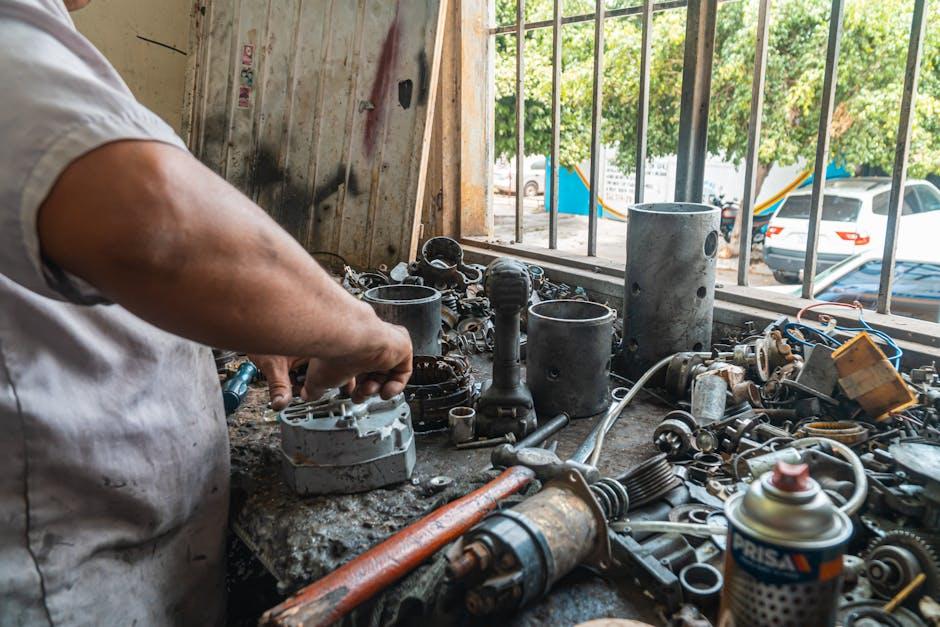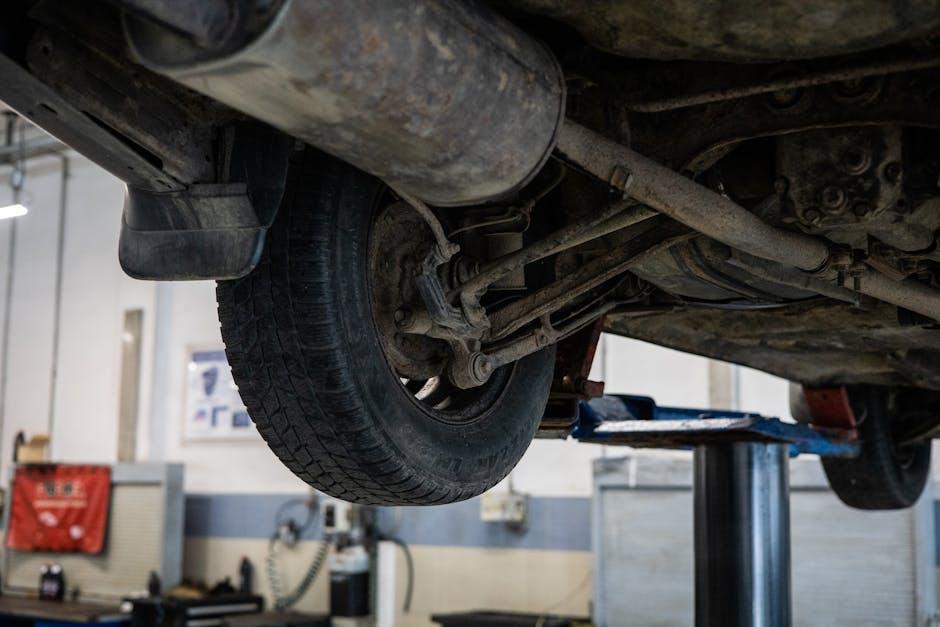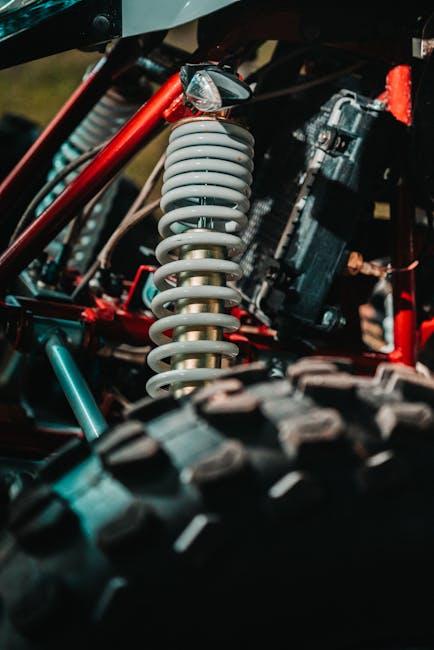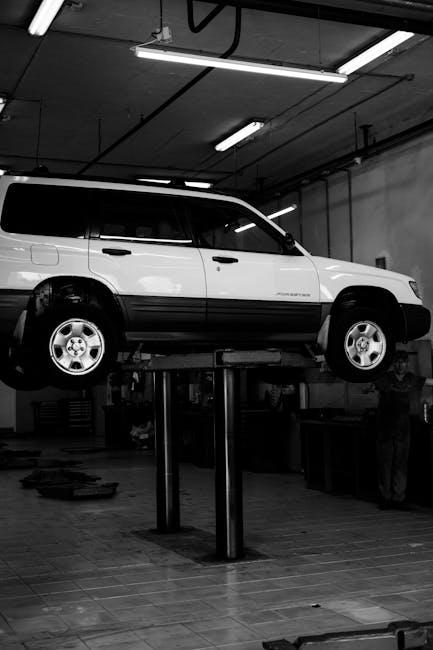Imagine cruising down a winding road, the scenery blurring past as your tires grip the asphalt with confidence. Suddenly, an unmistakable jolt interrupts the harmony—the suspension has failed. In that instant, the smooth dance between vehicle and terrain turns into a precarious balancing act. Suspension systems, often unnoticed heroes of our daily drives, play a crucial role in safety and comfort. When they falter, knowing how to respond can mean the difference between control and catastrophe. This article will guide you through the essential steps to recognize, manage, and recover from suspension failure, helping you stay secure on the road no matter what challenges arise.
Table of Contents
- Understanding the Warning Signs of Suspension Failure
- Diagnosing Common Causes Behind Suspension Breakdowns
- Essential Safety Measures to Take Immediately After Suspension Issues
- Step-by-Step Guide to Temporary Suspension Repairs
- Choosing the Right Replacement Parts for Lasting Suspension Health
- Professional Inspection and Maintenance Tips to Prevent Future Failures
- Q&A
- Closing Remarks

Understanding the Warning Signs of Suspension Failure
Spotting early indicators that your suspension system is on the fritz can not only save you from costly repairs but also prevent dangerous driving conditions. Common symptoms include a noticeable lean or sway when turning corners, an unexpected clunking or knocking noise when driving over bumps, and a general feeling that your vehicle is “floating” or unsteady on the road. Additionally, uneven tire wear and a vibrating steering wheel often hint that the shock absorbers or struts may be compromised. Recognizing these signs promptly allows you to address suspension issues before they escalate.
- Uneven Tire Wear: Indicates misalignment or worn suspension parts.
- Excessive Bouncing: Vehicle continues to bounce after hitting a bump.
- Steering Difficulties: Hard to steer or steering feels loose.
- Visible Damage: Cracked or leaking shock absorbers and struts.
| Symptom | Potential Cause | Urgency |
|---|---|---|
| Clunking Noise | Broken Suspension Spring | High |
| Pulling To One Side | Worn Bushings or Struts | Medium |
| Heavy Steering | Fluid Leak or Damaged Rack | High |
| Uneven Tires | Alignment Issues | Low |

Diagnosing Common Causes Behind Suspension Breakdowns
Suspension issues often arise from several key areas, each manifesting unique symptoms that can help pinpoint the problem quickly. One of the most frequent culprits is worn-out shock absorbers or struts, which lead to an unstable and bouncy ride. Equally common are damaged springs that cause uneven vehicle height or poor handling. To effectively diagnose these problems, pay attention to unusual noises such as clunking or squeaking when driving over bumps or during turns. Additionally, uneven tire wear or persistent pulling to one side often signal alignment or suspension component wear that needs immediate attention.
When troubleshooting, consider checking these typical problem areas for signs of failure:
- Bushings and joints: Look for cracks, excessive play, or wear that compromise flexibility and control.
- Control arms: Bent or broken arms will affect steering precision and increase tire wear.
- Ball joints: Worn ball joints cause rattling or looseness, especially noticeable at low speeds.
- Alignment and steering components: Misalignment can originate from suspension damage or normal wear, impacting overall driving safety.
| Component | Common Symptom | Diagnostic Tip |
|---|---|---|
| Shock Absorbers | Bouncy ride | Push down on the hood and release; excessive rebound indicates wear |
| Springs | Uneven vehicle height | Visual inspection for sagging or breaks |
| Bushings | Clunking noises | Check for excessive movement by hand |
| Control Arms | Poor handling | Inspect for bends or cracks |

Essential Safety Measures to Take Immediately After Suspension Issues
When your vehicle’s suspension starts to falter, your immediate priority should be to regain control and assess the situation safely. Slow down gradually by easing off the accelerator—avoid sudden braking or steering maneuvers, which can worsen the instability. Find a secure spot to pull over, preferably away from traffic and on a flat surface. If you’re on a busy road, turn on your hazard lights to alert other drivers and keep a safe distance from moving vehicles. Remember, stability is fragile in these moments, so every action you take should be deliberate and calm.
Once stopped, it’s vital to conduct a preliminary inspection to understand the scope of the suspension problem. Look for visible signs like:
- Leaking fluids or damaged shock absorbers
- Uneven tire wear or flat tires
- Sagging or misaligned wheels
- Loose or broken suspension components
If you spot any serious damage or feel unsure, avoid driving any further. Instead, call for professional roadside assistance to ensure your safety. For quick reference, here’s a simple checklist to consider right after you notice suspension issues:
| Action | Why It Matters |
|---|---|
| Reduce speed gradually | Maintains vehicle stability |
| Activate hazard lights | Warns nearby traffic |
| Inspect visible parts | Identifies damage scope |
| Call roadside assistance | Prevents further risks |

Step-by-Step Guide to Temporary Suspension Repairs
When faced with suspension failure on the road, the immediate priority is to stabilize your vehicle to avoid further damage or accidents. Start by safely pulling over to a flat area and engaging the parking brake. Use a jack to lift the affected wheel, then carefully inspect the suspension components such as the shocks, springs, and control arms. Look for obvious signs of damage like cracks, leaks, or broken parts. Once identified, make a temporary fix by:
- Using high-strength zip ties or wire to secure loose components and prevent them from moving excessively.
- Placing a sturdy block or wood between the damaged spring and the chassis to limit excessive travel.
- Applying a soft rubber sleeve or tape over fractured areas to reduce sharp edges that might cause damage.
These stopgap measures can help you safely drive to a repair shop, but they’re not substitutes for professional repairs. Before hitting the road, double-check your temporary fixes by gently lowering the vehicle and testing for stability. Avoid high speeds and bumpy roads, and keep your suspension repair timeline tight to prevent further hazards or mechanical failures.

Choosing the Right Replacement Parts for Lasting Suspension Health
When selecting parts to restore your vehicle’s suspension, it’s essential to prioritize quality and compatibility over cost. Opting for manufacturer-approved or OEM parts ensures that components fit precisely and perform as intended, providing safety and reliability. Be sure to check for parts that meet or exceed industry standards, such as those certified by the Automotive Industry Action Group (AIAG) or equivalent authorities. After all, a perfect fit translates to smoother rides and enhanced control on every turn.
To make the selection process easier, consider the following key factors:
- Material Durability: Choose parts made from corrosion-resistant materials like stainless steel or treated alloys.
- Technology Integration: Some modern suspension systems require sensors or electronic components—verify compatibility.
- Warranty and Support: Reliable manufacturers often back their parts with robust warranties, reflecting confidence in longevity.
| Part Type | Common Material | Typical Lifespan |
|---|---|---|
| Shock Absorbers | Steel with rubber bushings | 50,000–75,000 miles |
| Control Arms | Aluminum alloy | 75,000–100,000 miles |
| Ball Joints | Forged steel | 60,000–90,000 miles |

Professional Inspection and Maintenance Tips to Prevent Future Failures
Regular inspections are the cornerstone of a durable suspension system. Pay close attention to the condition of shock absorbers, bushings, and control arms for signs of wear or damage. Utilize a checklist during routine vehicle maintenance that includes:
- Visual inspection for cracks, corrosion, or leaks
- Checking alignment and tire wear patterns
- Testing suspension travel and responsiveness
- Listening for unusual noises during driving
Timely servicing not only extends the lifespan of suspension components but also enhances overall driving safety. Refer to the maintenance schedule below to keep your suspension system in optimal condition:
| Component | Inspection Interval | Recommended Action |
|---|---|---|
| Shock Absorbers | Every 20,000 miles | Replace if leaking or damaged |
| Control Arms & Bushings | Every 30,000 miles | Lubricate & replace if worn |
| Alignment Check | Every 10,000 miles or after impact | Adjust as necessary |
| Tire Wear | Monthly | Rotate and balance tires |
Q&A
Q&A: How to Handle Suspension Failure
Q1: What exactly is suspension failure?
A1: Suspension failure occurs when any component of your vehicle’s suspension system—like shocks, struts, springs, or control arms—malfunctions or breaks down. This can lead to poor handling, uneven tire wear, and a bumpy, unsafe ride.
Q2: How can I recognize the signs of suspension failure?
A2: Common signs include excessive bouncing after hitting bumps, unusual noises like clunks or squeaks, uneven tire wear, the vehicle pulling to one side, or a noticeably rough ride. If your car feels unstable or wobbly, it’s a red flag.
Q3: Is it dangerous to drive with a failing suspension?
A3: Yes. A compromised suspension affects your vehicle’s ability to handle turns, absorb shocks, and maintain traction, increasing the risk of accidents—especially at high speeds or on rough roads.
Q4: What should I do immediately if I suspect suspension failure?
A4: Slow down and avoid rough terrain. Try to find a safe spot to park. If you notice severe symptoms like swaying or loss of control, call for roadside assistance instead of continuing to drive.
Q5: Can I fix suspension failure myself?
A5: Suspension repairs often require specialized tools and knowledge. While minor issues might be DIY-friendly, it’s generally best to have a certified mechanic inspect and repair suspensions to ensure safety and reliability.
Q6: How do mechanics diagnose suspension problems?
A6: They perform physical inspections, checking for worn or broken parts, leaks in shock absorbers, and alignment issues. Test drives help identify unusual noises and handling quirks.
Q7: What are the typical fixes for suspension failure?
A7: Repairs can include replacing shock absorbers, struts, bushings, springs, or control arms. Sometimes, a full suspension overhaul is necessary, especially in older or heavily used vehicles.
Q8: Can regular maintenance prevent suspension failure?
A8: Absolutely. Routine inspections, timely replacement of worn components, and keeping tires properly inflated and aligned can extend suspension life and keep your ride smooth and safe.
Q9: How much can suspension repairs cost?
A9: Costs vary widely depending on the severity and parts involved—ranging from a few hundred dollars for minor fixes to over a thousand for extensive replacements.
Q10: Should I consider replacing my vehicle if suspension failure occurs?
A10: If repair costs approach or exceed the vehicle’s value, or if other major systems are aging, it might be more practical to consider a replacement. Otherwise, suspension repairs are often worthwhile for prolonging your vehicle’s life.
Closing Remarks
In the journey of vehicle maintenance, suspension failure is an unexpected bump that demands both attention and care. By understanding the signs, acting promptly, and seeking the right solutions, you transform a potentially dangerous setback into an opportunity for safer, smoother rides ahead. Remember, your suspension is the silent guardian of comfort and control—handle it wisely, and the road will always welcome you back with open arms.

